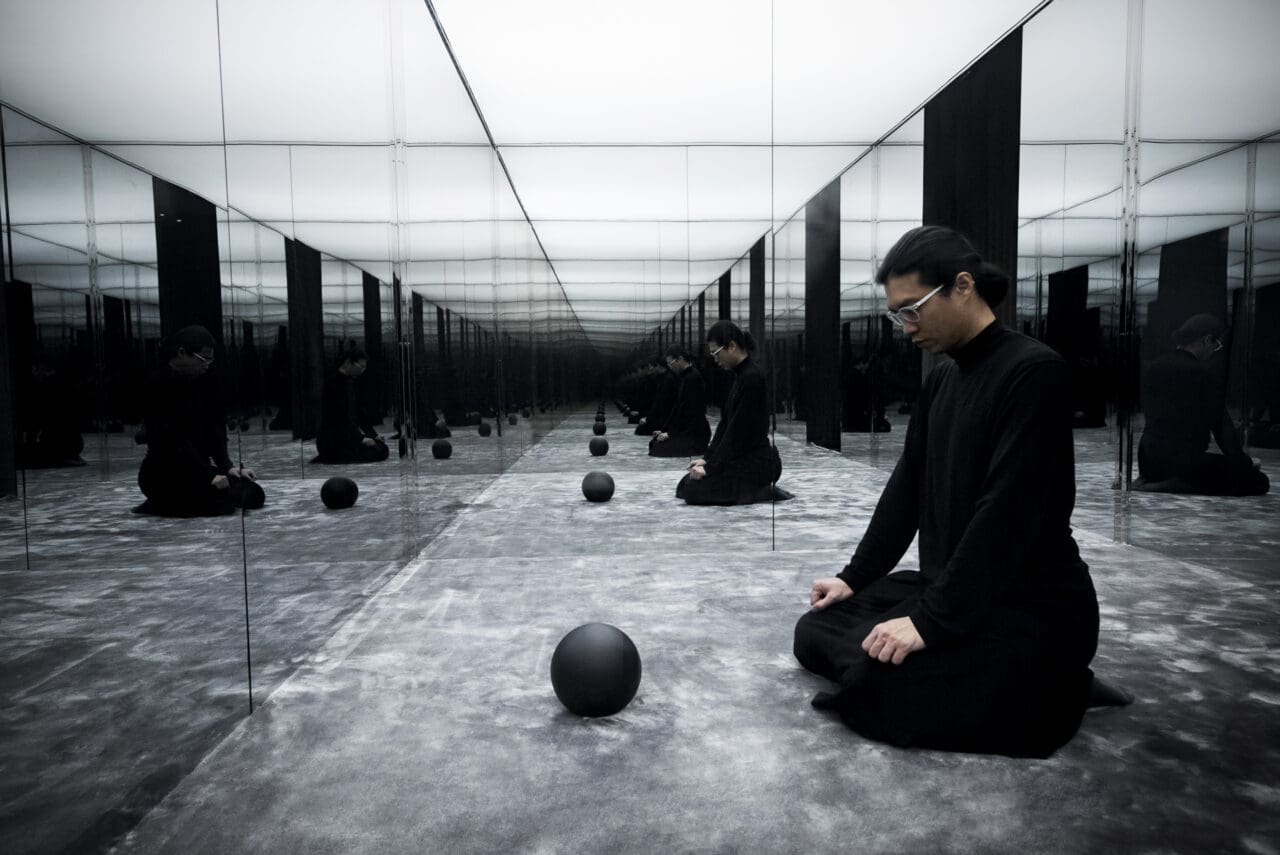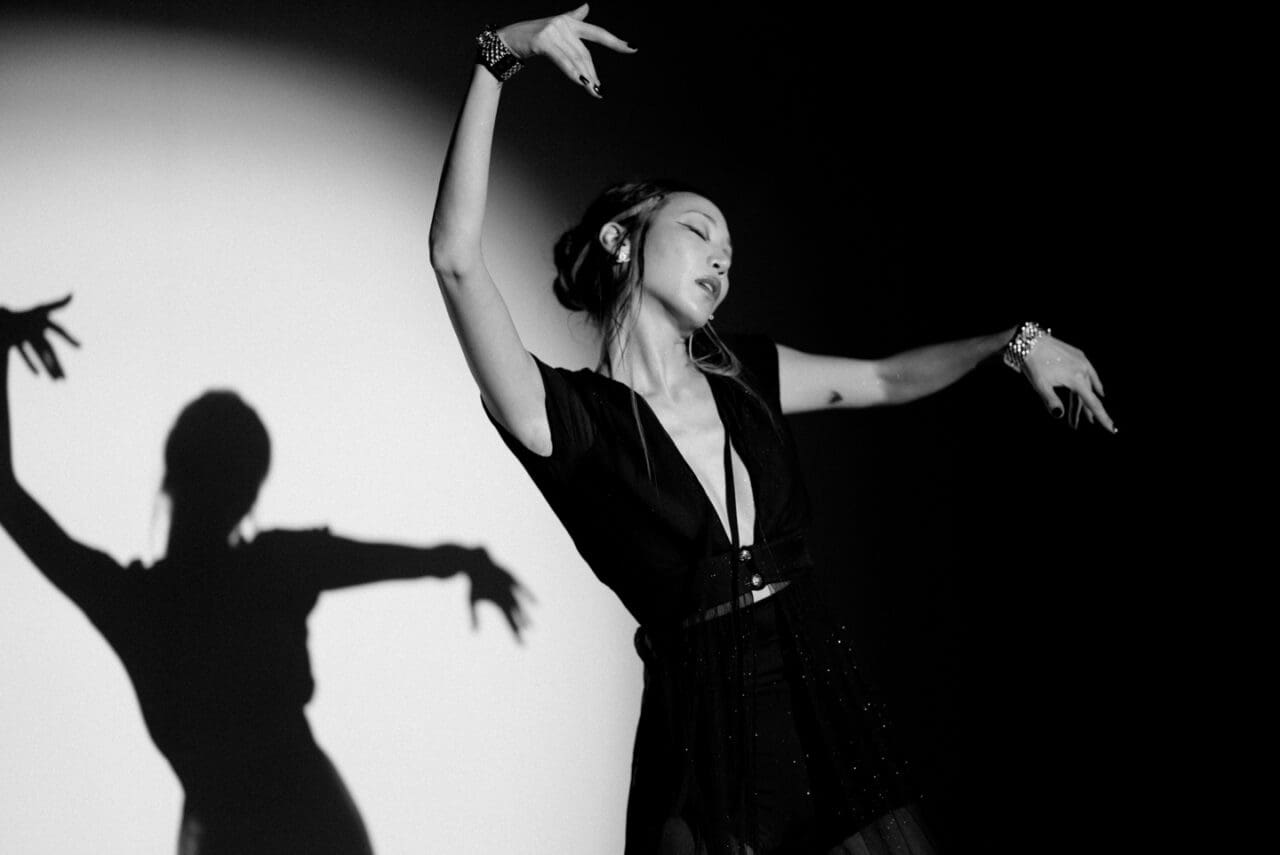“Come this way, I would like to show you something,” says Chan Ting. As we make our way to her home studio in the rural area of Lam Tsuen, the artist pauses outside the blackened facade of a weathered building. “This house was built after World War II, it is abandoned but all these plants are growing over it.” Indeed the house has long been forgotten; wedged between two lively homes, its smoky exterior merely survives as a shadow of what once was. But flourishing along the front of the forlorn structure is a verdant cluster of leaves, bright green and brimming with new life as if to remind us that from all endings come new beginnings.
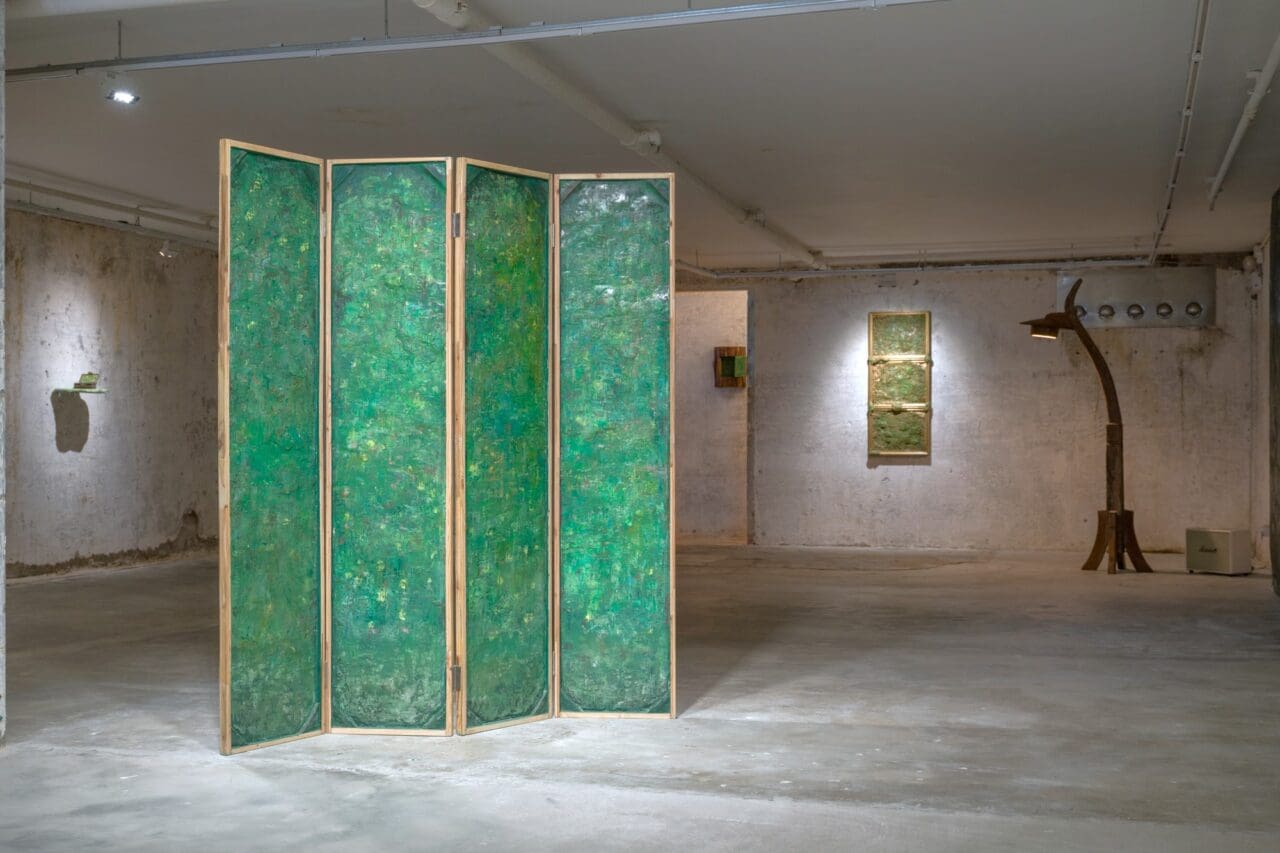
Installation view of “Dreamskin,” PHD Group, Hong Kong, 2024.
Photo: Felix SC Wong, Courtesy of the artist and PHD Group, Hong Kong.
At Chan Ting’s latest exhibitions with PHD Group and Para Site, a collection of once discarded and secondhand items had been similarly nurtured by the artist’s curious hands. Covered in peculiar green matter, some like the antique vinyl record case—the first object Chan Ting ever collected—were bought from vintage stores, while others were plucked from the city streets or disposal sites. A white first-aid box and seemingly handcrafted wooden lamp were sourced from Carousell, the latter of which came with an intriguing backstory.
“The seller turned out to be a visual arts teacher at a secondary school, and one of the students he had taught was a photographer and artist that happened to be one of my lecturers in university,” Chan Ting recalls with a fond laugh. “I thought it was quite serendipitous and I had discovered many stories between people. This incident became one of the stories that led to the “dreamskin” exhibition at PHD.”
An object’s true past, whether known or unknown to Chan Ting however, is not essential to her art. “Actually, I want to present a sense of vitality in how we should look at history and the past within old objects, regardless of whether that history is factual, oral history, or even inaccurate,” she says. “I would like to offer people another angle from which they can look at all that trauma, all those abandoned issues, the transitional journey of an object or even people. It’s very complex.” For her, it’s about foregoing rigid judgements and partaking in the beauty that comes with simply engaging with something or someone. It’s about creating that human connection.
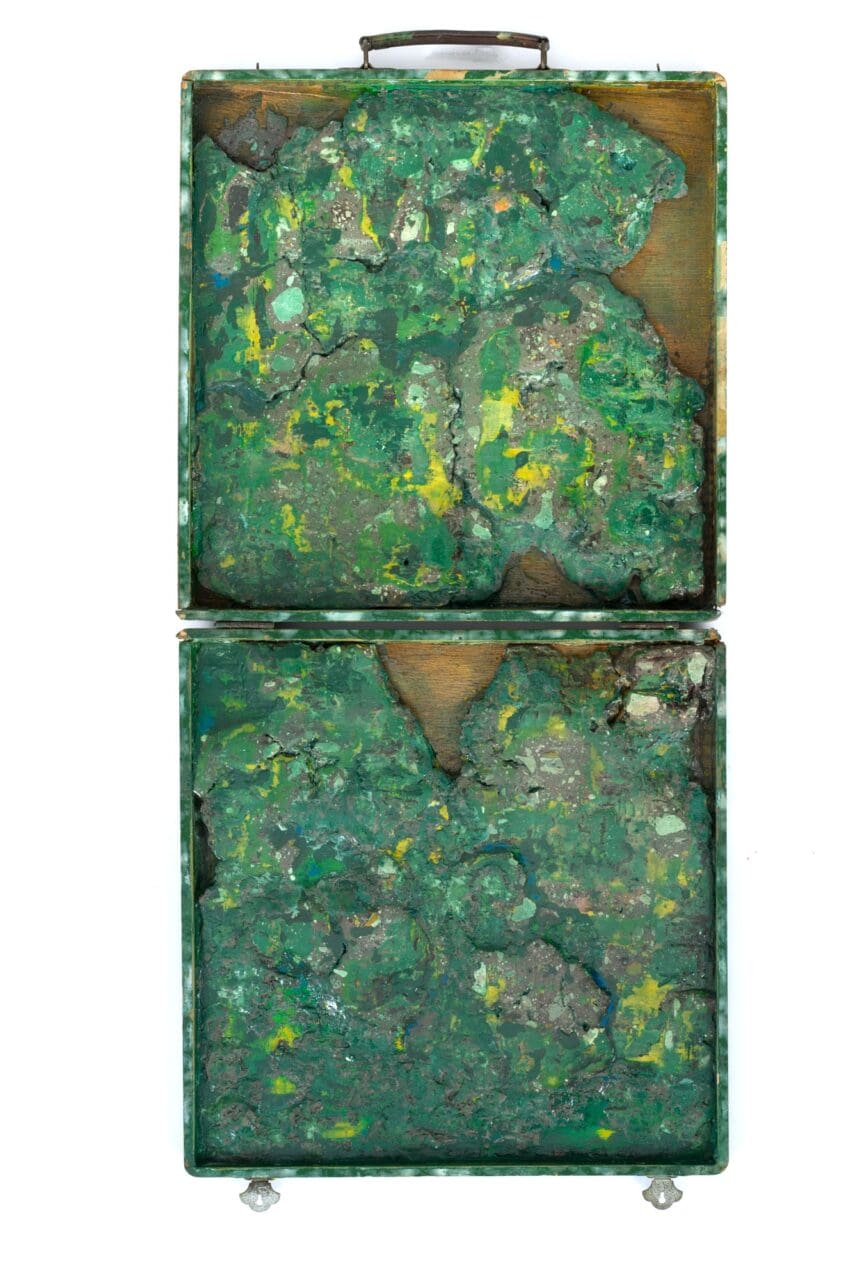
Dreamskin (2023-24). Antique record case, filler, plaster, industrial pigment, oil pastel, spray paint. 69 x 34 x 2.6 cm (open)
Photo: Felix SC Wong, Courtesy of the artist and PHD Group, Hong Kong.
Chan Ting’s journey with an object begins with an almost fated encounter. “Sometimes I have an instant feeling or I receive a call from the object; they are speaking to me. I consider this the beginning of my conversation with the object. I don’t know why but I just have a feeling that I should adopt it.” She references the vinyl record case—which she took despite not owning a single record of her own—or a folding screen she brought back to her home studio without any real purpose (she would later use it as a bedroom partition for over a year, before transforming into an art piece). There is no standard reasoning behind each of Chan Ting’s finds, though she does have one criteria that prevents her from straying too far from pragmatism.
“I can’t save everything nor can I bring back everything; in Hong Kong we have so many beautiful abandoned objects left in the street or in the garbage,” she muses. “I would only pick objects made of wood because I consider wood as a material that is still alive. I can also reshape its form with tools and materials that are affordable to me.”
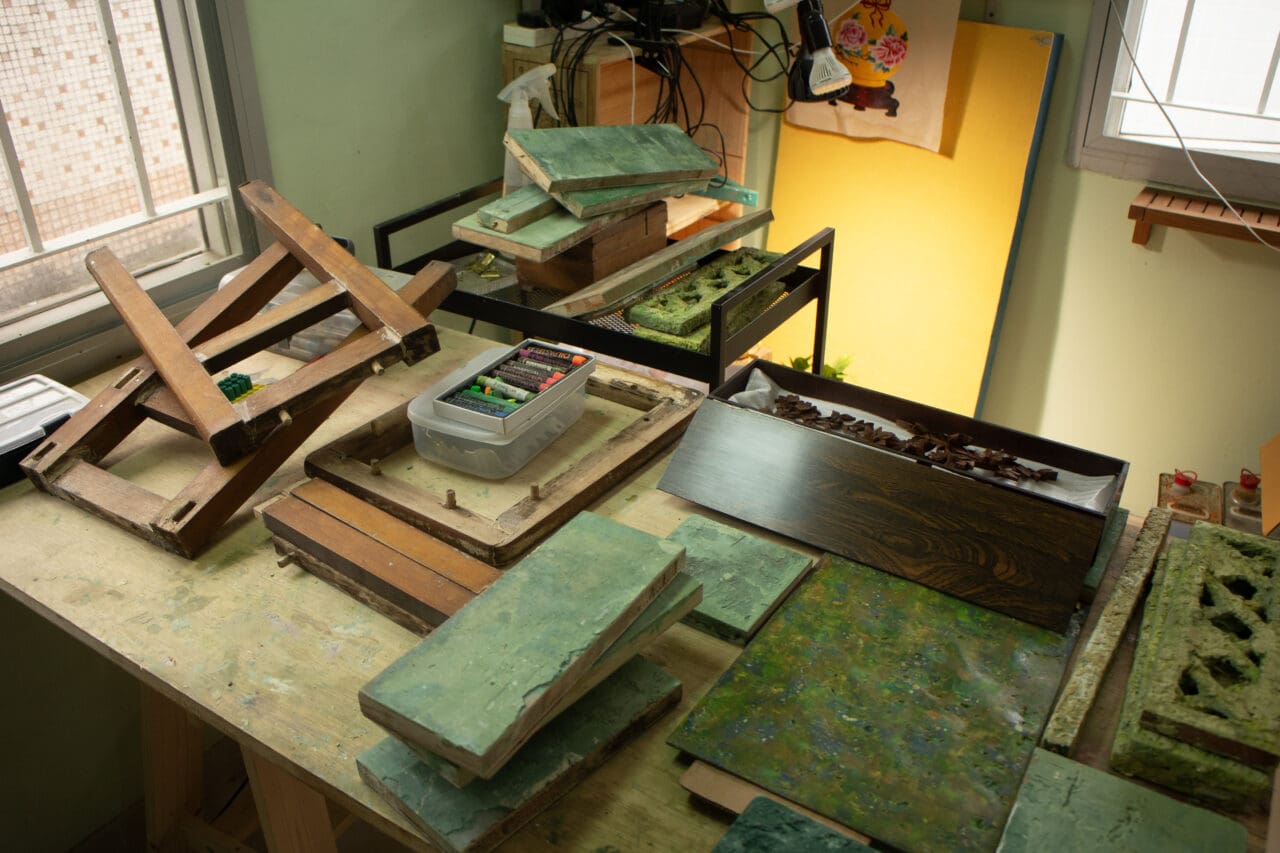
An assortment of wooden objects undergo transformation at the work bench.
Photo: Alyanna Raissa J. Payos
Awash in an unsurprising shade of green, Chan Ting’s home studio is a cross between a carpentry workshop and a serene ecosystem. A whole family of wall scrapers and the odd paintbrush or hammer dangle from makeshift wall racks, mingling amongst themselves, while miscellaneous wood items bask in their refuge, patiently awaiting transformation. Buckets of plaster linger in corners, endless cans of spray paint stand to attention, and a bag of shells hangs precariously off a shelf. There’s even a potted plant in one corner, drinking in the light from a lamp overhead. Filled with familiar everyday objects, it’s a charming image of a studio—the kind you dream of tinkering in as a child.
“I prefer not to buy or collect my materials from the art supply store because to me, daily materials are mystical, magical to me. There are so many possibilities we have never thought of,” Chan Ting explains. “But if we use materials like oil paints or brushes from the art supply store, they have been well developed for hundreds of years, and are designed for a certain way of painting and creating. I don’t [have] any interest in this because this—(she gestures to her workstation)—is so much more fun!”
Drawing from her experience of maintaining an art space in Foo Tak Building, Chan Ting renders each object anew with layers of industrial grade colour pigment and construction plaster. She then polishes, sands, or drills through the surface, searching for an identity between each coat of green. It’s a deeply moving display of the transformative power in care, and a healing process in which the artist not only acknowledges the once rejected, but gives it new value.
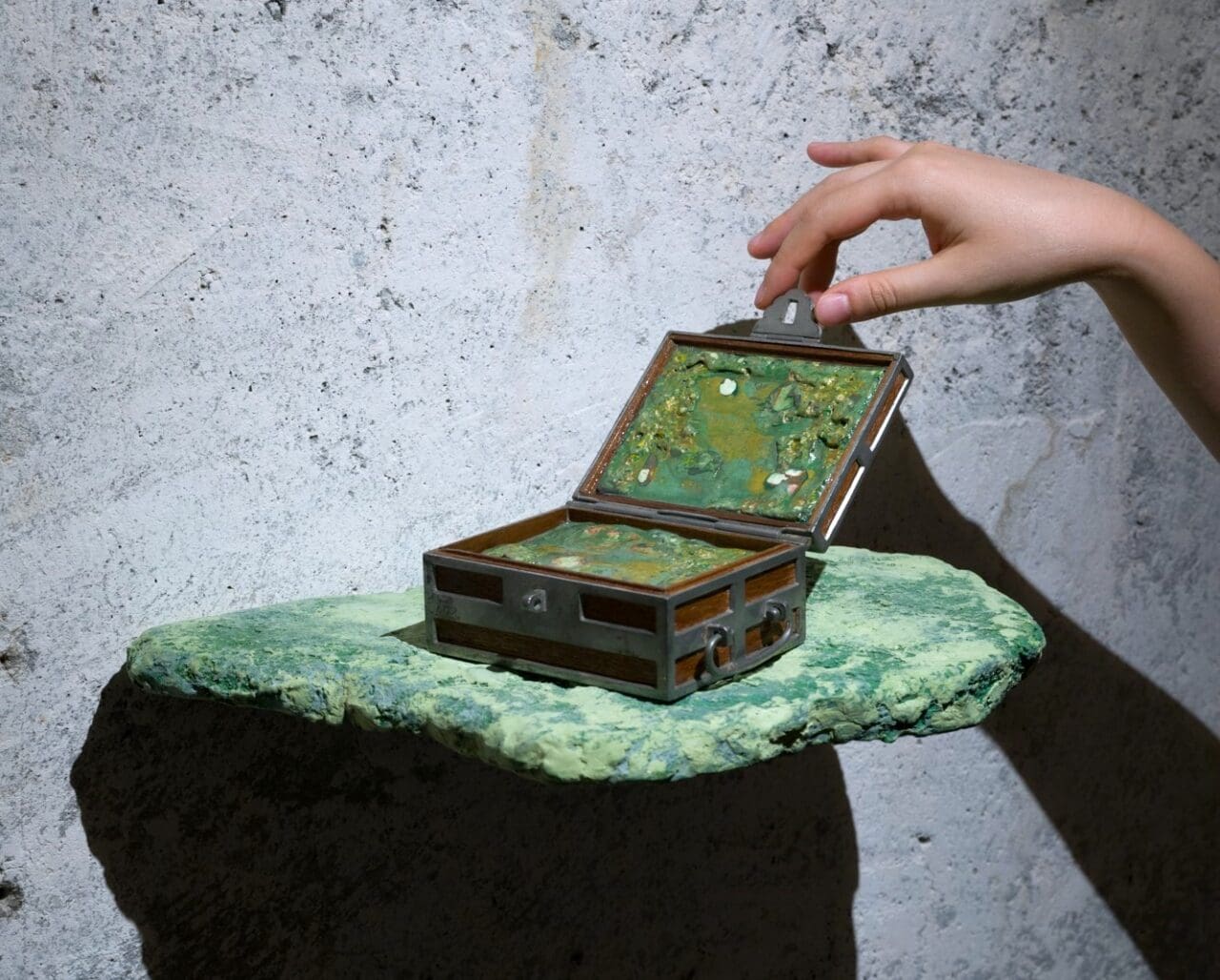
Installation view of Fluorite Landscape from the Train Window (2024) at “Dreamskin,” PHD Group, 2024.
Photo: Felix SC Wong, Courtesy of the artist and PHD Group, Hong Kong.
Each and every component of Chan Ting’s artworks is part of a larger artistic language system she has been building over the past year. The green thriving across the artist’s recent oeuvre was chosen for the many things it represents. Employed in her work to call upon the collective memory of our city, this anti-rust shade of green was born out of surplus paint used in the Hong Kong military during the Second World War. It gradually bled into the local cityscape, finding its way onto street market stalls, old shopfront shutters, trams, and the Star Ferry. The colour’s once visual role in an institution synonymous with violence and loss, had been repurposed into a unifying symbol of ordinary life.
Green, Chan Ting says, is also for the moss growing out of dampened cracks and crevices. It’s a metaphor for city life, for those persevering through the “shadows” and fighting through the ugly. “For me, it represents a spirit, a hope that people will stay here, will hang on and move forward,” says Chan Ting. “When we dive into our history, green may have been used in the killing of people, but when we look at moss, the colour may represent healing. [The duality] is so amazing to me. To kill, or to heal?”
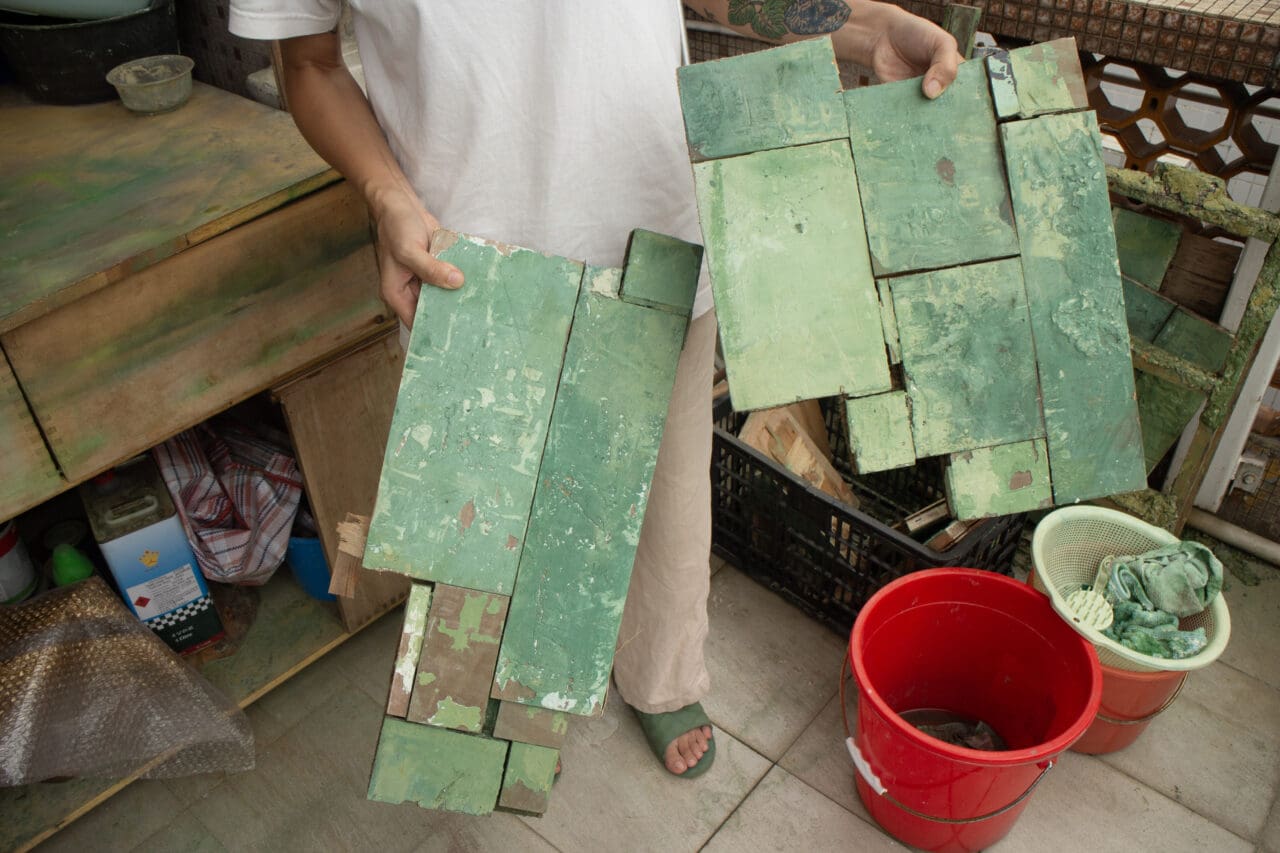
Chan Ting holds up wooden panel mosaics coated in her mixture of green pigment and plaster.
Photo: Alyanna Raissa J. Payos
As green offers myriad possibilities, so too does Chan Ting’s identity. “Most of my art consists of found objects and materials like filler, plaster, colour pigments and tools,” she reminds me. “All these materials are related to a certain kind of profession—a construction worker or builder, who are usually male. But if I, as a queer artist, pick up these tools in that context, I see how they are transformed into an unexpected result.”
With that in mind, Chan Ting has begun referring to her materials as “queer materials”. Typically industrial tools she deems as having masculine energy, drills and sanding machines become tools for wondrous exploration in Chan Ting’s artistic language. “I enjoy [using them] to explore qualities that have not been known before. My materials are the same but the result is magical. Sometimes it’s very harsh in texture, but sometimes it is soft, gentle, sparkling, and reflective. Sometimes it creates a weird feeling; I’ve been asked ‘Is this artwork dry or wet’?” It’s very transformative in all the ways, so I consider these queer materials. There are so many possibilities and every time I work with it I feel like I’m expanding the spectrum, pushing past the limitations on these materials.”
Chan Ting’s art is a depiction of the tumultuous journey that comes with being alive. It’s about embracing transience, practising compassion and committing to openness. “I’ve discovered that life and art are inseparable, so when I create, I try to let go of this obsession with ‘making a good piece’ or ‘using the right materials.’ What I care more about is people’s day-to-day lives, and the state of how everyone lives in this city.”
Editor
Alyanna Raissa J. PayosCredit
Lead image: Courtesy of the artist



